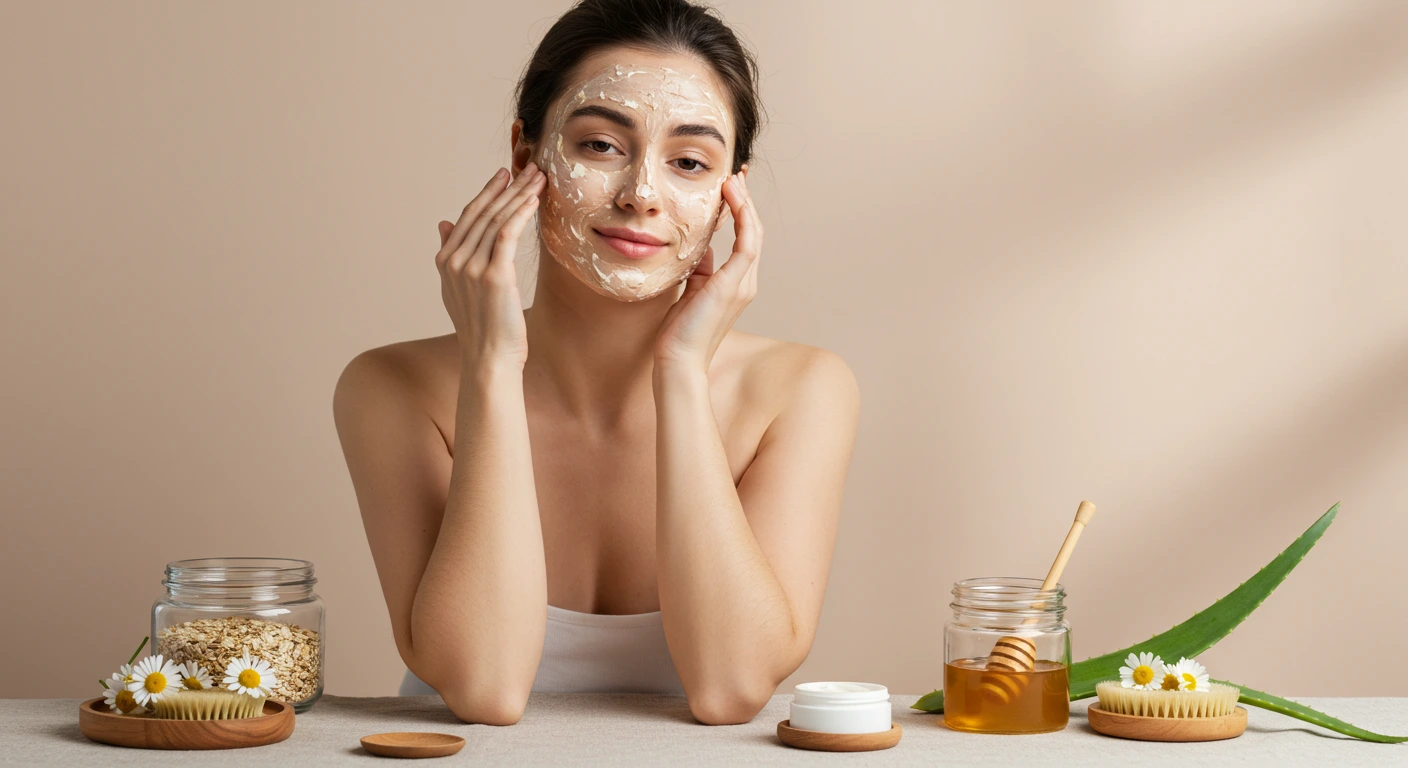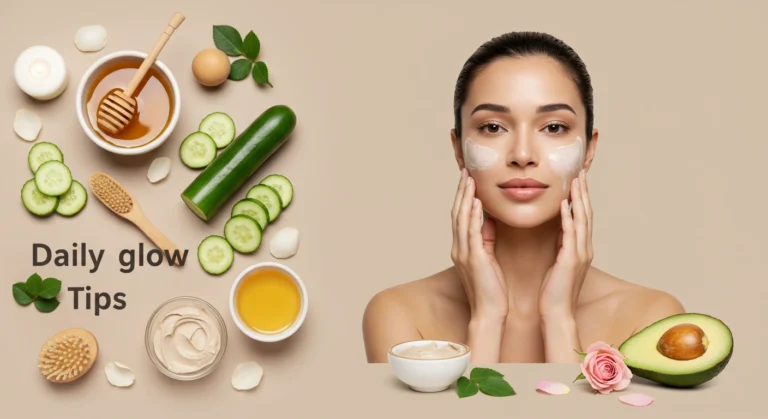Table of Contents
10 Natural Beauty Tips for Women
Are you tired of struggling with sensitive skin that reacts to seemingly everything? Redness, irritation, and discomfort don’t have to be your daily reality. As someone who battled sensitive skin issues for years, I understand the frustration of trying product after product only to face disappointment and irritation.
After extensive research and personal experimentation with natural ingredients, I’ve developed a gentle yet effective skincare routine specifically designed for sensitive skin. These 10 natural beauty tips will help calm inflammation, strengthen your skin barrier, and restore your complexion’s natural radiance—all without harsh chemicals that can trigger reactions.
In this comprehensive guide, you’ll discover skin-soothing ingredients, step-by-step application techniques, customization options for your specific concerns, and expert advice on maintaining healthy sensitive skin. Let’s transform your skincare routine into a nurturing ritual that your skin will thank you for.
Why This Skincare Remedy Works
Natural skincare remedies offer particular benefits for sensitive skin types that commercial products often can’t match:
- Formulated with gentle, skin-loving ingredients that work with your skin’s natural processes
- Supports hydration and natural glow without synthetic additives that can trigger reactions
- No harsh chemicals, artificial fragrances, or common irritants that compromise your skin barrier
- Creates a foundation for long-term skin health rather than just temporary symptom relief
- Customizable to your specific sensitivity triggers and skin needs
When dealing with sensitive skin, less is truly more. The beauty of these natural approaches lies in their simplicity and purity—qualities that sensitive skin craves.
Choosing the Right Ingredients
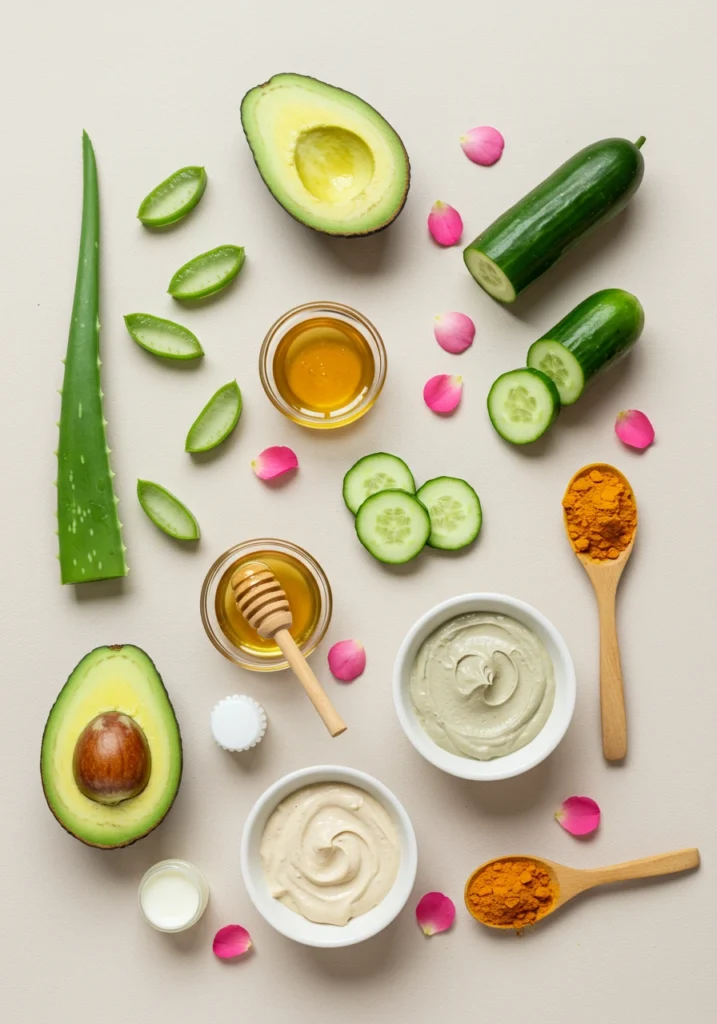
Top Ingredients for Skin Renewal
For sensitive skin renewal, select ingredients that calm inflammation while providing essential nourishment:
- Oatmeal acts as a gentle exfoliant while soothing irritation and reducing redness
- Honey offers natural antibacterial properties while drawing moisture into the skin
- Aloe vera provides cooling relief and accelerates skin healing
- Green tea delivers antioxidant protection and reduces inflammation
- Chamomile calms reactive skin and helps decrease sensitivity over time
What to Avoid
Be vigilant about eliminating these common irritants from your skincare routine:
- Alcohol-based products that strip natural oils and compromise your skin barrier
- Synthetic fragrances which are leading causes of allergic reactions
- Sulfates and harsh cleansing agents that disrupt your skin’s pH balance
- Chemical preservatives like parabens that can trigger sensitivities
- Essential oils in high concentrations, despite their natural origin
Substitutions
If you react to certain natural ingredients, consider these gentle alternatives:
- Replace aloe vera with fragrance-free cucumber gel if you have an aloe sensitivity
- Substitute honey with vegetable glycerin for similar humectant properties
- Use rosewater instead of witch hazel if you need an alcohol-free toner
- Choose colloidal oatmeal over regular oats for even gentler exfoliation
- Opt for plain yogurt instead of lactic acid products for mild exfoliation
Ingredients & Prep
Prep Essentials
Proper preparation ensures maximum benefits without irritation:
- Always begin with clean hands to avoid introducing bacteria
- Gently cleanse your face with lukewarm water and a mild, sulfate-free cleanser
- Consider a brief facial steam (not too hot) to open pores for better ingredient absorption
- Perform a patch test with any new ingredient by applying a small amount behind your ear for 24 hours
- Have clean towels ready and tie back your hair before beginning
DIY Mask Ingredients
This soothing sensitive skin mask combines powerful calming ingredients:
- 2 tablespoons organic colloidal oatmeal
- 1 tablespoon raw honey
- 1 tablespoon plain, unsweetened yogurt
- ½ teaspoon aloe vera gel
- Optional: 2-3 drops of chamomile extract
Pantry Staples
Keep these versatile ingredients on hand for various sensitive skin treatments:
- Extra virgin olive oil – a gentle moisturizer suitable for most sensitive skin types
- Plain rolled oats – can be ground into a fine powder for cleansing or exfoliation
- Organic yogurt – contains natural lactic acid for very mild exfoliation
- Pure honey – antibacterial and humectant properties
- Green tea bags – can be brewed and refrigerated for soothing toner or compresses
Step-by-Step Application Instructions
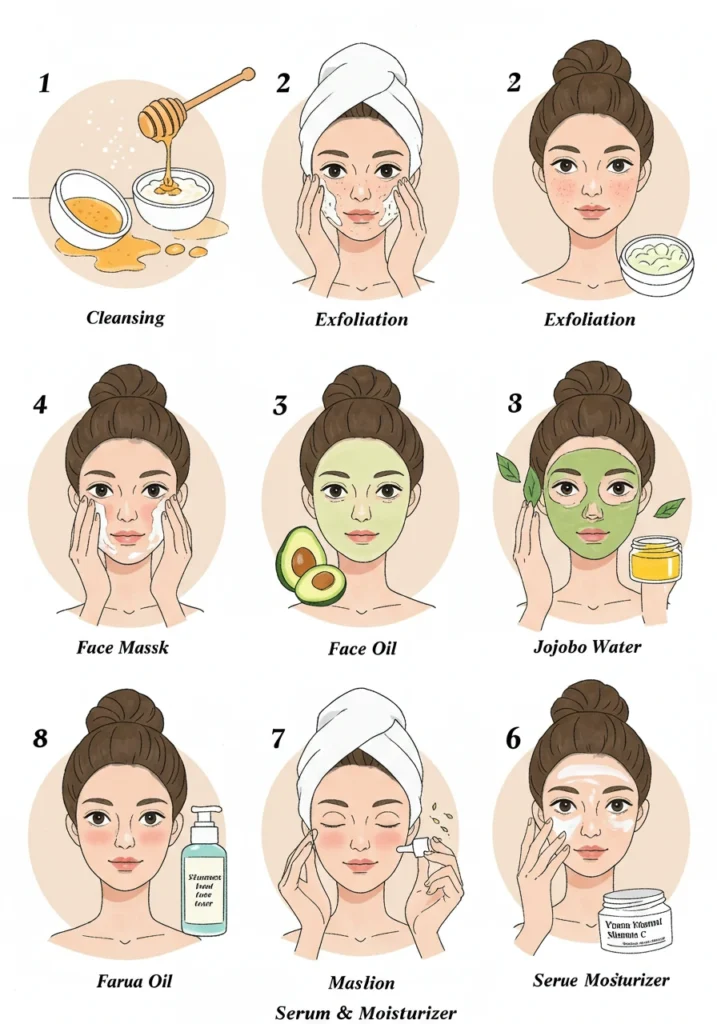
Before You Begin
- Perform a gentle cleanse using lukewarm water and a pH-balanced cleanser formulated for sensitive skin
- Pat your face dry with a soft cotton towel—never rub sensitive skin
- If you have time, hold a warm (not hot) damp washcloth to your face for 1-2 minutes to gently open pores
How to Apply
- In a small bowl, combine all mask ingredients until you achieve a smooth, consistent texture
- Using clean fingertips or a soft mask brush, apply an even layer to your face, avoiding the immediate eye area
- Apply with gentle upward strokes, never pulling or tugging at the skin
- Leave the mask on for 10-15 minutes—less time for first-time users or those with extreme sensitivity
- Relax in a reclined position to prevent the mask from dripping
Rinse & Aftercare
- Remove the mask with lukewarm water and gentle circular motions
- Rinse thoroughly to ensure no residue remains on the skin
- Pat (don’t rub) your face dry with a clean, soft towel
- Apply a fragrance-free moisturizer formulated for sensitive skin while your face is still slightly damp
- If applying during daytime, follow with a physical (mineral) sunscreen with SPF 30 or higher
Pro Tips for Radiant Results
Avoiding Irritation
- Always patch test new ingredients, even natural ones, as sensitivities vary by individual
- Less is more—thin layers of product are less likely to cause irritation than thick applications
- Watch the temperature—both extreme cold and heat can trigger flare-ups in sensitive skin
- Be mindful of environmental factors like wind, sun, and humidity that can increase sensitivity
- Introduce new products or ingredients one at a time to isolate potential triggers
Recommended Tools
- Soft silicone application brush for gentle, hygienic mask application
- Organic cotton pads for toner application rather than synthetic options
- Clean muslin cloths for gentle removal of products
- A good quality magnifying mirror to monitor skin changes
- Ice cube wrapped in soft cloth for emergency calming of flare-ups
Storage & Reuse
- Refrigerate any unused mask mixture in an airtight container for up to 3 days
- Keep DIY toners and mists in dark glass bottles in the refrigerator for up to one week
- Freeze aloe vera in ice cube trays for quick soothing treatments
- Store dry ingredients like oatmeal in cool, dry places away from direct sunlight
- Clean all application tools thoroughly after each use to prevent bacterial growth
Custom Variations
For Dryness
Sensitive skin often lacks adequate moisture. Enhance hydration with these modifications:
- Add 1/2 teaspoon of avocado oil to your mask for deep nourishment
- Include a drop of vegetable glycerin to draw moisture into the skin
- Consider a final layer of pure shea butter on particularly dry areas
- Incorporate a few drops of cucumber juice for extra hydration without irritation
- Apply to slightly damp skin to lock in additional moisture
For Excess Oil
Even sensitive skin can experience oiliness. Balance your skin with these adjustments:
- Increase the yogurt proportion in your mask for gentle acid exfoliation
- Add a pinch of kaolin clay (white clay) which draws out impurities without irritating
- Include green tea powder (matcha) for its astringent properties
- Use a chilled mask application to help tighten pores
- Follow with an alcohol-free witch hazel toner on oilier areas only
For Sensitivity
For extremely reactive skin or during flare-ups, try this modified approach:
- Skip all optional ingredients and stick to the bare minimum (oatmeal and aloe)
- Reduce application time to 5-7 minutes
- Use cool or refrigerated ingredients to reduce inflammation
- Add a teaspoon of organic, unflavored coconut water for extra soothing properties
- Consider a final misting with thermal spring water after rinsing
Best Times to Use This Remedy
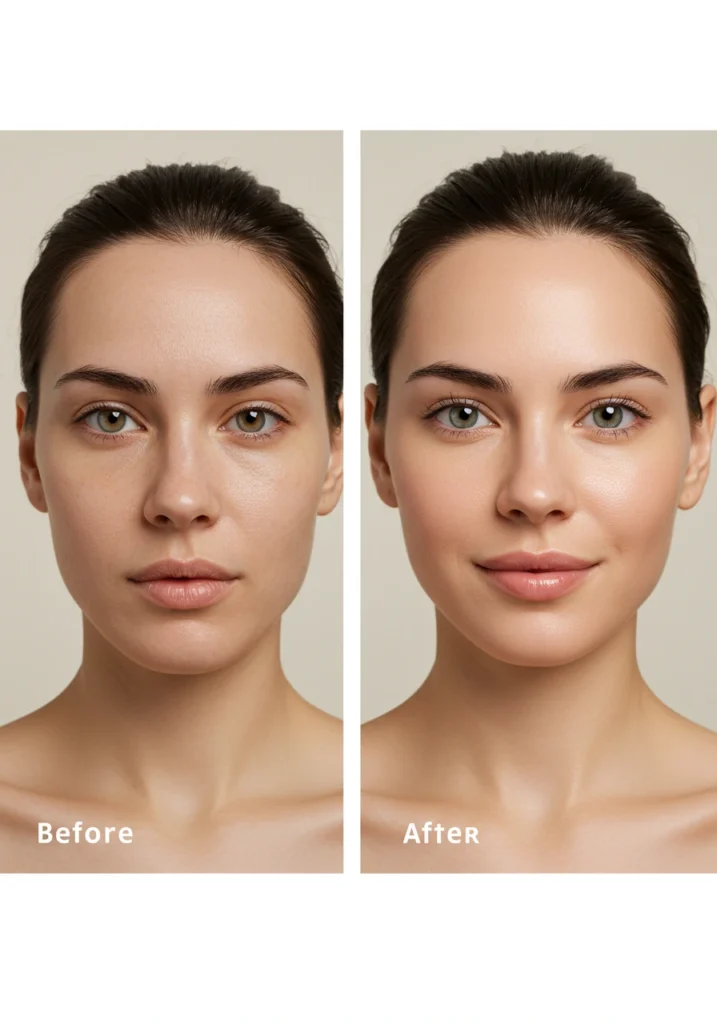
Timing your skincare routine strategically maximizes benefits while minimizing potential irritation:
- Routine Placement: Incorporate these treatments into your evening routine when your skin isn’t exposed to environmental stressors afterward
- Suggested Frequency: Begin with once-weekly applications, gradually increasing to 2-3 times weekly as tolerance builds
- Pre-Event Boost: Apply 24 hours before special occasions to allow any potential reactivity to subside while benefiting from the radiance boost
- Seasonal Adjustments: Increase usage during seasonal transitions when skin tends to be more reactive
- Post-Exposure Recovery: Use after unavoidable environmental exposure (wind, sun, pollution) to calm and restore skin
For optimal results, maintain consistency rather than intensifying treatment during flare-ups.
FAQs
Is this skincare routine suitable for all types of sensitive skin?
Yes, these remedies are designed for various sensitive skin types. However, individual sensitivities differ, so always patch test new ingredients. The beauty of this approach is its customizability—you can adjust ingredients based on your specific triggers and concerns.
How often can I apply these treatments to my sensitive skin?
Start conservatively with once-weekly treatments. As your skin barrier strengthens, you may gradually increase to 2-3 times per week. Pay attention to your skin’s response—if you notice increased sensitivity, reduce frequency and simplify ingredients.
Can I combine these natural treatments with my existing skincare products?
Yes, but introduce natural treatments gradually alongside existing products. Avoid using these treatments the same day as products containing active ingredients like retinol, vitamin C, or chemical exfoliants, which could increase sensitivity. Consider creating “active days” and “soothing days” in your routine.
How long before I see results with this sensitive skin routine?
Most people notice immediate calming effects after the first application. However, meaningful improvement in skin barrier function typically takes 2-4 weeks of consistent care. Patience is key—sensitive skin responds best to gentle, consistent approaches rather than aggressive treatment.
Are these treatments safe during pregnancy?
Most ingredients recommended here are pregnancy-safe, but always consult with your healthcare provider. Pregnant women might want to omit essential oils and opt for the simplest versions of these treatments.
Conclusion
Caring for sensitive skin doesn’t require complex routines or expensive products—often, it’s the simplest, most natural approaches that yield the best results. By incorporating these gentle, natural beauty tips into your regular skincare routine, you can effectively address sensitivity while improving your skin’s overall health and appearance.
Remember that consistency is key when treating sensitive skin. Small, daily acts of gentle care will strengthen your skin barrier over time, reducing reactivity and building resilience. Be patient with your progress and attentive to how your skin responds to different ingredients and techniques.
I encourage you to approach your sensitive skin journey with curiosity rather than frustration. By learning what works specifically for your skin and creating a personalized routine based on these natural principles, you’ll not only address immediate concerns but also develop lifelong habits for healthy, radiant skin.
Your sensitive skin isn’t a limitation—it’s simply asking for a more mindful approach to beauty. These natural beauty tips provide exactly that: effective care that respects your skin‘s unique needs.

